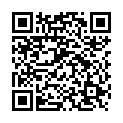|
|
|
| Module code: E401 |
|
1V+1U (2 hours per week) |
|
2 |
| Semester: 4 |
| Mandatory course: yes |
Language of instruction:
German |
Assessment:
Written examination
[updated 10.03.2010]
|
E401. Biomedical Engineering, Bachelor, ASPO 01.10.2011
, semester 4, mandatory course, course inactive since 28.11.2013
E401 Electrical Engineering, Bachelor, ASPO 01.10.2005
, semester 4, mandatory course
|
30 class hours (= 22.5 clock hours) over a 15-week period.
The total student study time is 60 hours (equivalent to 2 ECTS credits).
There are therefore 37.5 hours available for class preparation and follow-up work and exam preparation.
|
Recommended prerequisites (modules):
E305 Programming
[updated 10.03.2010]
|
Recommended as prerequisite for:
|
Module coordinator:
Prof. Dr. Michael Igel |
Lecturer:
Prof. Dr. Michael Igel
[updated 10.03.2010]
|
Learning outcomes:
After successfully completing this course, students will have acquired a basic understanding of how graphical user interfaces can be developed for Windows operating systems using the programming language C++ in the integrated development environment Microsoft Visual Studio. Students will also have acquired a deeper understanding of the development of dialogue-based user interfaces.
[updated 10.03.2010]
|
Module content:
1.Concepts used in the development of graphical user interfaces
1.1.The “Document View” concept
1.2.Single Document Interface (SDI)
1.3.Multi Document Interface (MDI)
1.4.Message Handling
2.Design of GUIs
2.1.The C++ Resource Workshop within the integrated development environment
2.2.Graphical controls and classes
2.3.Integrated assistants in the integrated development environment
2.4.Support via the MFC library
3.Development of GUIs
3.1.Message handling with the application frame
3.2.Messages from graphical controls
3.3.Message handler implementation
3.4.Systematic software testing
3.5.Development of a dialogue-based software tool (student exercise)
[updated 10.03.2010]
|
Teaching methods/Media:
Lecture notes, video projector, Microsoft Visual Studio integrated development environment
[updated 10.03.2010]
|
Recommended or required reading:
On-line help for Microsoft Visual C++, Microsoft
Kernighan/Ritchie: Programmiersprache C, Carl Hanser Verlag
Prinz: Objektorientierte Programmierung mit C++, Prentice Hall
Richard Leinecker: Die Visual C++ 6 Bibel, Markt & Technik
[updated 10.03.2010]
|


